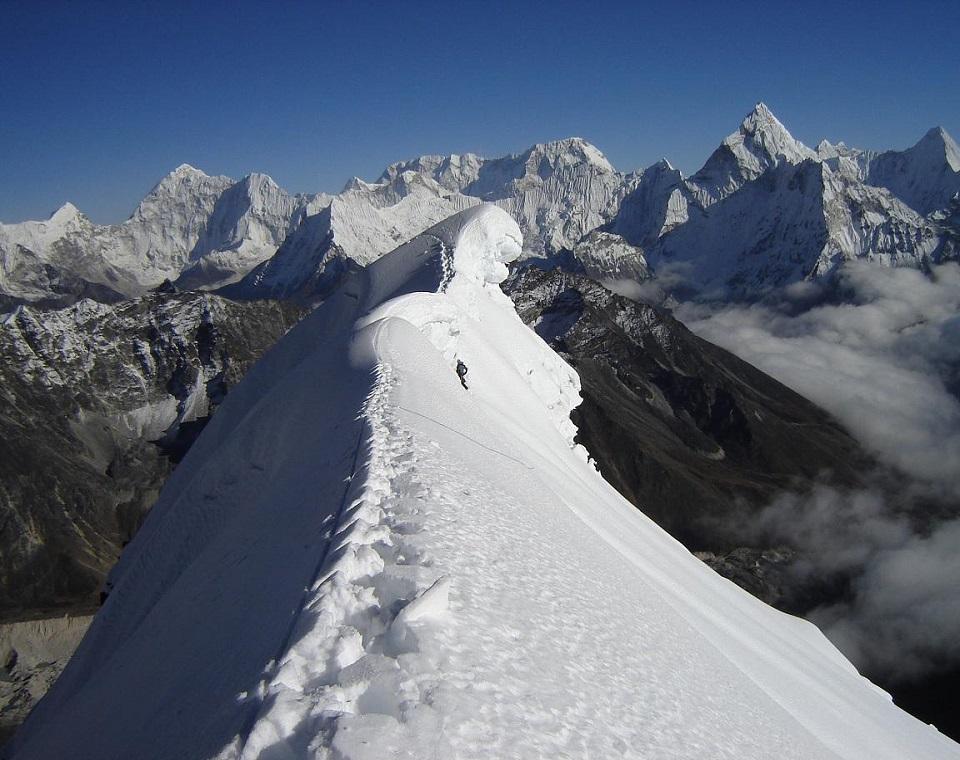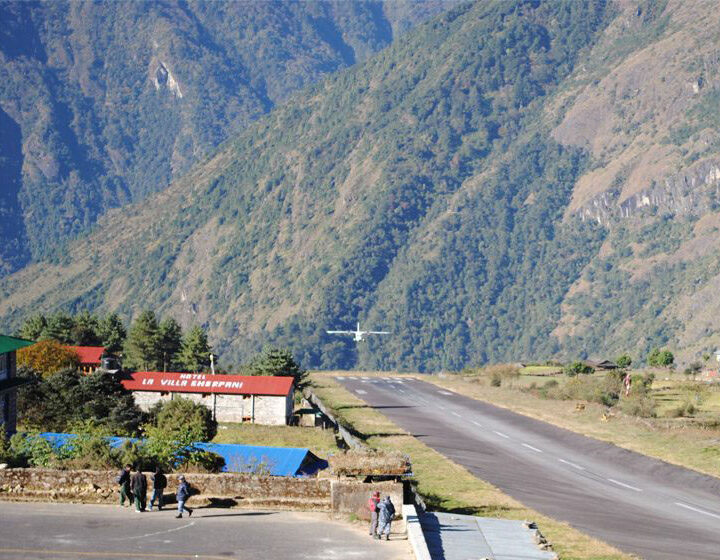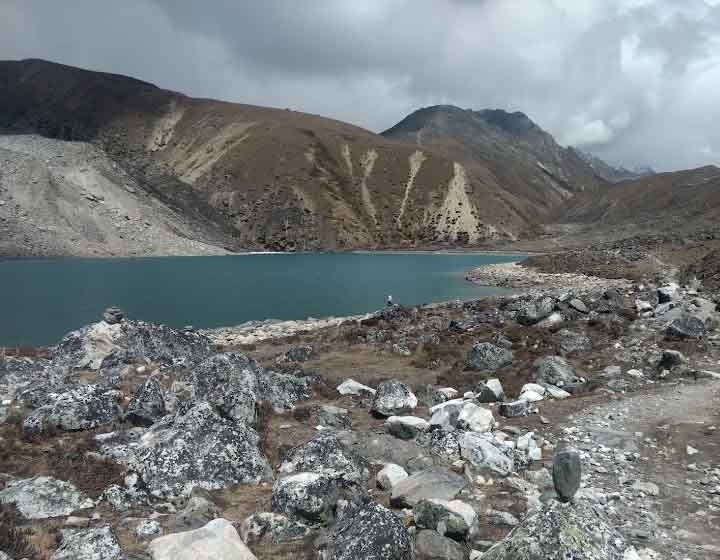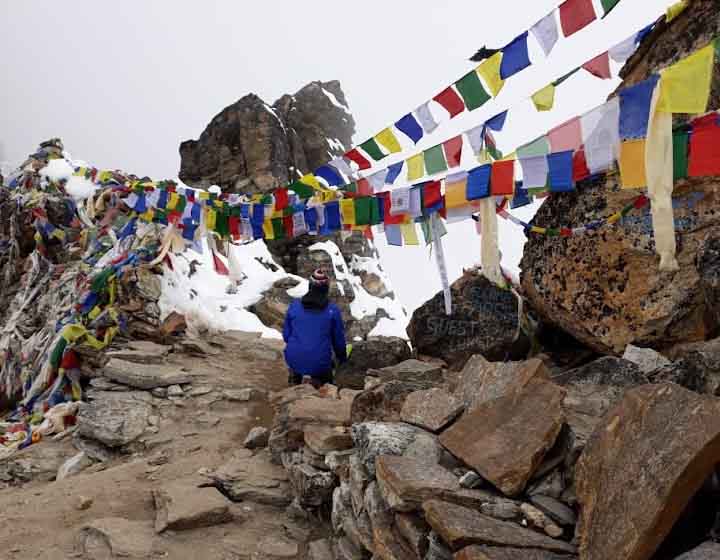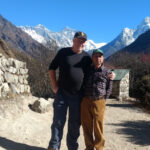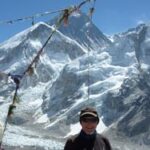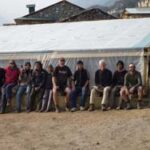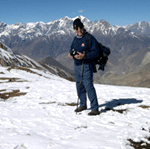Lobuche Peak Climbing is a thrilling Himalayan adventure, blending high-altitude trekking with an exhilarating mountaineering experience. Lobuche Peak Climbing is a thrilling Himalayan adventure. Lobuche East stands at 6,119 meters and is one of Nepal’s most popular trekking peaks. It offers stunning panoramic views of Mount Everest, Lhotse, Nuptse, Ama Dablam, Makalu, and other giants. This 18-day journey is ideal for adventurers seeking a rewarding challenge that remains within reach for moderately experienced climbers. Along the way, you’ll experience the rich culture of the Khumbu region.
Lobuche Peak: Location
The Lobuche Peak climb is a small mountain only 6,119 meters high. Lobuche Peak Climbing is one of the most popular and challenging summits in the Khumbu region. Climbing requires healthy physical fitness and a positive attitude to reach the top of East Lobuche peak. Lobuche East Peak lies southwest of Everest Base Camp, near the Cho-La Pass. It remains hidden until you reach the Lobuche and Tugla areas. From there, you can see its twin peaks—Lobuche East and Lobuche West—standing tall in the Khumbu Valley.
Lobuche Peak is situated in the Khumbu region of northeastern Nepal, close to the Everest Base Camp trail within the Sagarmatha National Park. It lies near the village of Lobuche, not far from the famous Khumbu Glacier and Gorakshep, offering climbers stunning alpine scenery and access to some of the world’s highest mountains.
Starting and Ending Points
Starting Point: Kathmandu, with a scenic flight to Lukla (2,860m), and Ending Point: Lukla, with a return flight to Kathmandu. Along the journey, trekkers pass through iconic villages like Namche Bazaar, Tengboche, Dingboche, and Lobuche, each offering its own unique charm and culture. From there, it continues to Lobuche High Camp and, ultimately, to the summit of the peak.
Settlement of Peoples, Lifestyle, and Religion
The trail traverses through traditional Sherpa settlements, a community known for its resilience, mountaineering skills, and warm hospitality. The Sherpas live a mountain-based lifestyle, relying on agriculture, yak herding, and tourism for their livelihood. Their culture is deeply rooted in Tibetan Buddhism, visible in the colorful monasteries, prayer flags, mani walls, and chortens throughout the trail.
A key spiritual highlight of the journey is a visit to Tengboche Monastery, the largest gompa in the region. It offers a unique blend of cultural richness and scenic beauty.
HIGHLIGHTING THE MAIN POINTS:
Beautiful mountain flight from and to Lukla. You will see Everest Base Camp and the glacier. You will do the Lobuche East Peak summit of 6119 m and view Everest and other mountains from Kalapattar. You will enjoy amazing views from the Lobuche summit. The bazaar of Namche and the monastery of Tengboche… Sightseeing of the beautiful world heritage sites in Kathmandu. An unforgettable view of the high mountains and the Khumbu Icefall.
Vegetation and Atmosphere
The journey takes you through various climatic zones: Lower regions (Lukla to Namche): Dense rhododendron, pine, and birch forests. Mid-altitudes (Namche to Dingboche): Alpine shrubs, junipers, and gradually sparse vegetation. Higher elevations (Above Dingboche): Rugged, glacial terrain and barren landscapes
The air becomes crisp and thin as you ascend, with a noticeable drop in oxygen levels—adding to the thrill and challenge of the climb. The atmosphere is tranquil, spiritual, and invigorating, surrounded by the grandeur of the Himalayas.
Flora and Fauna Along the Lobuche Peak Route
The Lobuche Peak climbing journey offers a rich diversity of flora and fauna, especially in the lower altitudes of the Sagarmatha National Park, a UNESCO World Heritage Site.
Flora
At the lower elevations (around 2,800 meters), trekkers first pass through lush forests filled with rhododendrons—especially vibrant in spring—along with birch, pine, juniper, and oak trees. As the trail ascends, the vegetation gradually shifts to alpine shrubs and mosses. Higher up, beyond 4,000 meters, the landscape becomes sparser, giving way to alpine meadows, dwarf junipers, and eventually to rocky, glacial terrain.
Fauna
The park is home to several rare and endangered animals. Along the trail, if you’re lucky, you might spot Himalayan tahr, musk deer, snow leopards (rare and elusive), or red pandas (mostly in the lower forested regions). Himalayan monal (Nepal’s national bird), blood pheasant, and other high-altitude birds. As you move higher, wildlife sightings decrease, but the serene alpine environment remains incredibly rewarding.
Why Climb Lobuche Peak?
Adventure with Accessibility: A perfect blend of trekking and mountaineering for climbers with moderate experience. Technical Challenge: A great introduction to the use of ropes, crampons, and ice axes. Spectacular Views: Arguably the best vantage point to witness Mount Everest and the Khumbu Glacier. Cultural Experience: Deep dive into Sherpa heritage, lifestyle, and spiritual landscapes. EBC Bonus: Many itineraries include an Everest Base Camp trek, making it a two-in-one adventure.
Conclusion
Climbing Lobuche Peak is not just a mountaineering expedition – it is a life-changing journey through the soulful culture of Nepal. From the busy streets of Kathmandu to the serene heights of Lobuche Peak, every step offers adventure, knowledge, and a deep connection with the majestic Himalayas.



